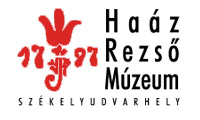Kovács Petronella (szerk.): Isis - Erdélyi magyar restaurátor füzetek 17. (Székelyudvarhely, 2017)
Domokos Levente - László Károly: A berethalmi evangélikus templom sekrestyéjében álló kandalló restaurálása
and upper edging ribbons are fixed on the artefact. For storage, acid free cardboard boxes are prepared for the opened fans with full-size acid free support. When exhibited fans are placed to a slightly oblique Plexiglas or acid free cardboard support. Andrea Várfalvi Textil conservator MA Translated by: Márta Kissné Bendefy Eszter Tóth The modern history of a chalice from the Avarian Period The modem history of the chalice started in the autumn of 2014, when it was found on the outskirts of Jászfényszaru, during the course of an excavation of a cemetery of the middle Avarian Period. All of the graves in the cemetery had been unsettled at the age of the Avarian Period, including the grave containing the chalice, but it had stayed undisturbed downwards from the waist of the dead. That was the luck of the above-mentioned object, which was found next to the right foot of the deceased. Despite the lack of disturbance, the chalice was found in three pieces, the hemispherical bowl, the stem, and the slightly convex foot. As the chalice was put into the grave, the bowl had been damaged by a sharp-edged tool, seemingly on purpose. Such chalices, made of metal with a hemispherical bowl, have been reported from seven sites in the Carpathian Basin, especially from its middle part, but are unattested in sites outside this area. Among similar objects chalices made of bronze, silver, and gold as well have been found, the last pair of chalices being the parts of the Treasure of Nagyszentmiklós (Sânnicolau Mare, Romania). Conservation was first done on the chalice by Csilla Cserepkei in the autumn of 2014. The removal of the corrosion products was carried out by using mechanical methods and chemicals (5% solution of EDTA Na2 in distilled water). For sticking the pieces together grey coloured epoxy resin was applied as adhesive. The protective coating of 8% Paraloid B72 dissolved in acetone was given to the surface. Silver as a possible coating was excluded by a microchemical test, so the raw material of the chalice was determined as “tinned copper/bronze”. Considering the tin coating dechlorination was not implemented. By using energy dispersive X-ray microanalysis in a scanning electron microscope the foot of the chalice was analysed, and it turned out to be made of tinned copper (the tin coating consists of almost pure tin, the ground metal consists of 96-98% copper), the solder consists of 80% tin and 20% lead. The melting point of the solder could be estimated at 200°C. The melting point of pure tin is 232°C, so the tin coating has the same melting temperature. These figures mean that the parts of the chalice had been tinned first, and then they were soldered together, because otherwise the compiled chalice would have come into pieces during the tinning process. Evidence for it could be found on the chalice itself, i.e. the arched, dashed lines around the solder testify to the usage of a file before soldering. In the summer of 2016, pale green-coloured corrosion could be observed in the depths of the pittings, due to the lack of dechlorination at the first conservation process and the proper relative humidify in the storage room, so it was necessary to do further conservation work on the chalice. The method and the chemical solution were the same as at the first treatment, but the chosen adhesive was colourless. Before the reassembling of the object, a layer of Paraloid B72 dissolved in acetone-toluene (1:1) was applied on its parts without dechlorination because of the chalice had to be ready for a television recording. Sticking the three parts together was implemented on an upside down position. To get the right viscosity of the adhesive experimentations were needed. Some weeks later green corrosion reoccurred on the chalice, so the protective coating was removed, and the chemical treatment was repeated. The dechlorination was carried out by retting the object in distilled water. After drying a protective layer of Paraloid B72 was applied again on the entire surface. Eszter Tóth Metal and goldsmith conservator MA Translated by. Eszter Tóth Eva Puskás - László Sulyok ’Descent from the Cross’. Renascence of a painting The painting which now belongs to the St. Charles Borromeo Parish in Sighetu Marmaţiei (Romania), once decorated the walls of the Piarist Grammar School of the town. The unknown, 19th century master probably based his artifact on the painting ’Descent of Christ from the Cross’ by Daniele Ricciarelli da Volterra, which can be seen in the Church Santissima trinita dei Monti in Rome. The support of the painting, which was made from one piece of thin, densely woven linen canvas, became wavy, rigid, broken and split. Many holes could be observed on its edges, which suggested that it had been re-nailed several times in the past. The tom and incomplete areas had been repaired from the back side with patches cut out of an old painting. The stretcher frame was distorted, its joins became loose, the shape of the cross bar got pressed into the painting. Traces of earlier interventions probably from different times and by different persons could be seen on the painted surface even by naked eye. The painting got scratched and split, its surface was covered with a varnish layer which 182
